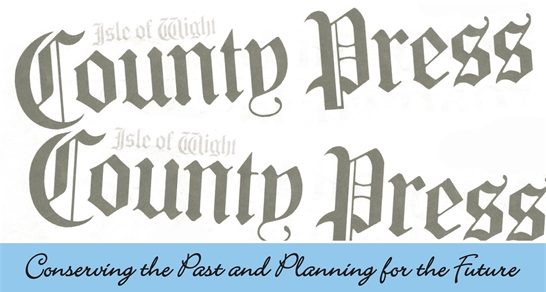October 2020
Today we have a new awareness of our past controversial history, such as the slave trade. Several grand buildings on the Island would not have been built had their owners, or their fathers or grandfathers, not made their money by being involved in the slave trade. The Osborne House built in 1775 was one of them.
However we have a monument on the Island which shows carved in stone how the feelings of people changed over just a few years.
The Hoy monument stands proudly on the north end of St. Catherine’s Down. It is a tall stone column with a large sphere on the top. It was built in 1814 by Michael Hoy, who was a merchant trading with Russia. He lived in a house called the Hermitage on the eastern slopes of the down.
He had the column erected on the occasion of the visit to Britain by Tsar Alexander I of Russia. At that time the Tsar had led his armies successfully against Napoleon, supporting Britain. Alexander did not plan to visit the Island. The inscription reads:
In commemoration of the visit of his Majesty Alexander I, Emperor of all the Russias, to Great Britain in 1814, in remembrance of many happy years residence in his dominions this pillar was erected by Michael Hoy.
By the 1850s Britain was at war with Russia in the Crimea. Feelings were running against Russia as British men died in the fighting. A different tale needed to be told, but instead of demolishing the column, a subsequent owner of the land added a new inscription to the pillar.
This tablet was erected by William Henry Dawes late Lieutenant of HM 22 Regt in honor of those brave men of the allied armies who fell on the Alma at Inkerman and at the siege of Sevastopol AD 1857.
The pro-Russian feelings expressed by Michael Hoy have gone, but the monument remains.
Within a few years things changed again. Members of Queen Victoria’s family married into the Russian royal family. Friendly links between the countries were established again, for a while.
The Russian royal family visited the Island in 1909, but we have no handy stone memorial explaining that. Photographs were taken of the two families together at Barton Manor, Whippingham, the Island retreat retained by King Edward VII for his own use when Osborne House was given to the nation after Queen Victoria’s death.
Unfortunately King George V did not offer asylum to the Russian royal family in 1917, fearing a revolution here. The death of the Tsar and his family, including his sister-in-law Elizabeth, has resulted recently in another monument, the Grand Duchess Elizabeth monument in East Cowes.
Our feelings of what is right or wrong may change over the years. What happened in history cannot be changed.
[Go Back]

